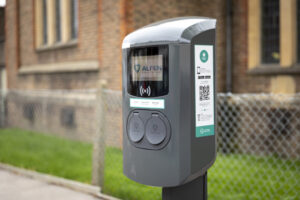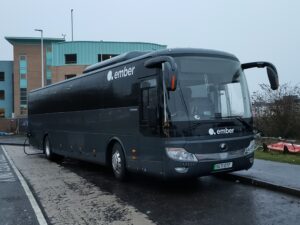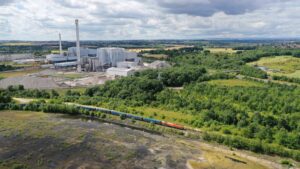Air pollution and why we need more than marginal change
In the battle for headlines and public opinion, we can’t lose sight of the very real need to change the way we travel – not just the fuels we use – argues Nicholas Sanderson
It’s no secret that getting to grips with urban air pollution is confusing, and given recent headlines about the causes and effects of air pollution, you may be forgiven for being even more confused.
But really, at the heart of the matter is a fairly simple problem, and a fairly simple solution.
The problematic particles
The air pollution issue in the spotlight at the moment is broadly a problem of illegal levels of nitrogen dioxide and dangerous levels of particulate matter predominantly, but not exclusively, in our towns and cities. Nitrogen dioxide inflames the airways, which increases the risk of asthma and bronchitis.
Exposure worsens these diseases in those who already suffer from them, particularly children. And then there are children whose lungs do not fully develop or function as a result.
Particulate matter (PM) is the very fine dust that gets into our bodies, mainly through breathing it in. The smaller the particles, the deeper into our bodies they penetrate, leading to increased risks of asthma, cancer and heart disease. Even more concerning is a growing body of evidence on the link between PM2.5 (the finest dusts) and dementia.
While the Royal College of Physicians’ figure of 40,000 deaths brought forward gives us a sense of the damage, big numbers tend to mask the daily suffering of those with conditions, including children whose lungs will not develop as fully as their peers – and collectively, with spikes in GP and hospital admissions after high pollution events.
For nitrogen dioxide, where in London there is a wealth of evidence available, we know that half (51%) of nitrogen dioxide are from road transport, this rises to 80% where legal limits are being broken. While this is interwoven with other causes and conditions, an estimate from 2010 put 5,900 early deaths in London down to nitrogen dioxide pollution.
The longer term goal has to be to reduce traffic and shift the way we travel
Equally concerning is what happens to the particular matter, which requires a much bigger effort. The health cost to Londoners has been estimated at 3,500 deaths brought forward in 2010.
Nearly half (48%) of PM in London is from road transport, but unlike nitrogen dioxide, only 7% of these particulates are from exhaust emissions.
The very fine particulate (PM2.5) dust that gets deep into our lungs is largely produced by the erosion and breakdown of brake pads and tyres on the road. Some studies suggest this could be worse from electric vehicles simply because they are heavier.
The World Health Organisation states there is no safe level of PM2.5, the very finest dust in the air.
To address this requires measures to reduce the number and use of motor vehicles, particularly diesel cars and commercial vehicles.
Like the plastic bag charge and congestion charge before it, we know London’s ultra-low emissions zone and clean air zones in other cities will work – a small charge can have a very big impact on behaviour. These are needed in many more cities than the government’s plan, and in London the zone needs to be ready to expand and to tighten standards well into the future.
Simply put, we are too reliant on motor vehicles to move ourselves and the things we consume around – it’s time to make sustainable travel a real choice for many more of us and make air pollution from road transport an issue of the past.
At a national level, Sustrans has joined up with other organisations to call on all political parties to commit to three key asks that will push this at a UK level.
We can’t afford a marginal change
In London, that means the mayor’s transport strategy has to be all about modal shift. London’s growth and Londoners’ health and quality of life are dependent upon a transport system that doesn’t go beyond the capital’s physical and environmental constraints.
In principle, that first means a transformation of London’s streets to make cycling and walking safer and buses much cleaner, more convenient and efficient.
Secondly, it requires a move toward a road-pricing system that consolidates the congestion charge and emissions charging into a simplified joined-up system. This will ultimately help manage demand for motor-travel – reducing congestion and traffic levels.
While newspapers might incorrectly report that the answer to pollution is to make marginal changes to remove speed humps or cycle tracks, the meaningful results come from overhauling how transport works and what kinds of travel it prioritises.
- Read about Sustrans’ snap general election asks
- Respond to Transport for London’s ultra low emission zone consultation
Photo by EURIST e.V. 















